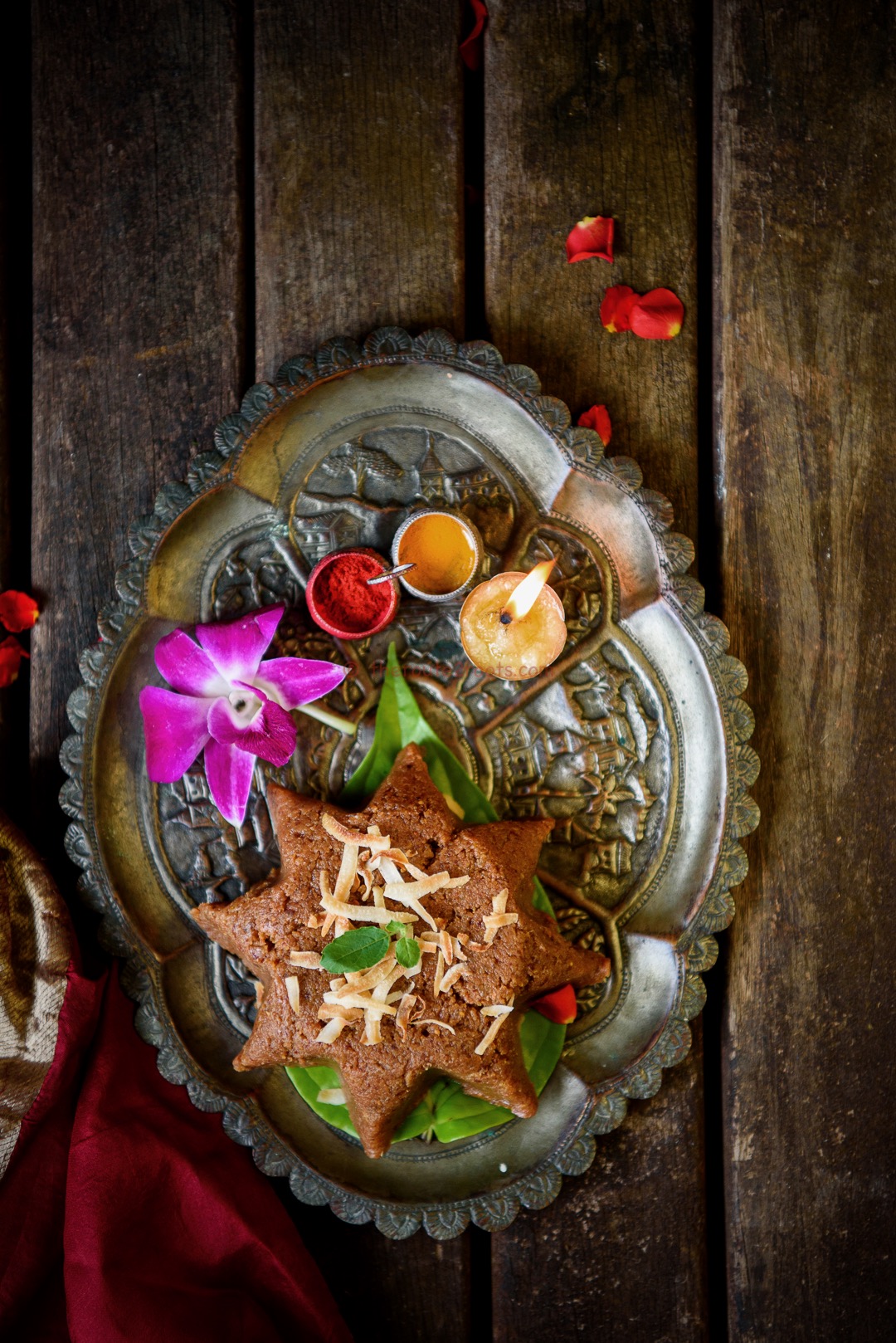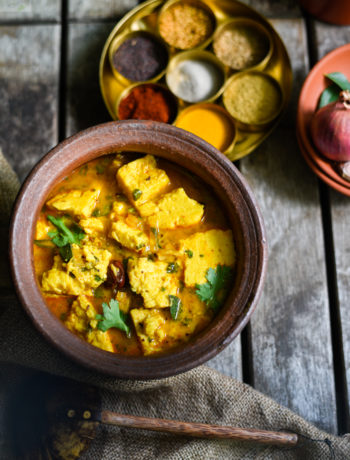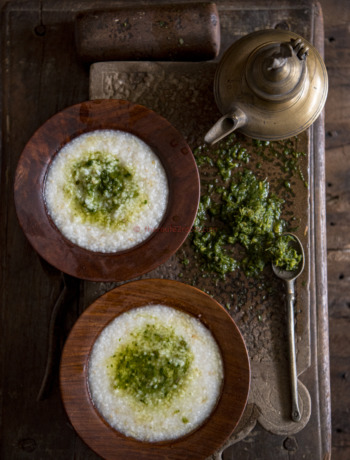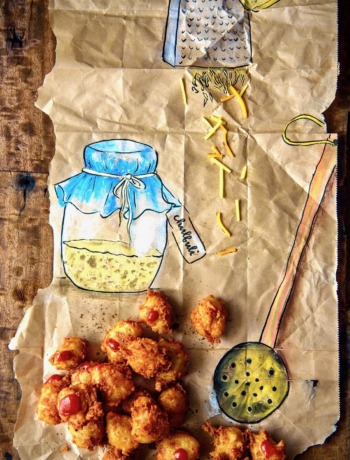Kharek/Chuare/Dried Dates reminds me of patasha-kharek Prasad at Bhajans hosted at by my Ba, Mota-Mummy (Taiji). It also reminds me of Madhu who always hummed these devotional songs. Back then, Bhajan evenings were intriguing occasions. At our home they were a bi-monthly occurrence, I think. A large group of cheerfully chattering women armed with dhol, Khanjaree, manjira would descend into our spacious living room. Refreshments would be served on arrival. As the redetion of Bhajans began, the air around the neighbourhood turned thick with the beats of dhol, the electrifying dhoon and Bhakti Bhav. Once the Bhajans were over, laughter and chiter-chatter would once again fill the house. There was a sharing of joy and grief. These women shared warmth and camaraderie. They were a group who supported one another. Once the Bhjanas were done Prasad packed in news-paper packets was shared. Penda and shiro were eaten with tea while kharek-patasha were packed to be brought home.
“Madhu introduced the ritual of Mallamata into our family,” I remember my mummy once mentioned this as we prepared the Mallamata before Navratri. Madhu, was my younger brother’s nanny who stayed with us for 11 years. It was through her that I got introduced to Bhajans as she hummed while attending chores. It was a practice to sing Bhajans while cooking. My Mota-Kaki, Madhu, Ba were diligent with it. So the Mallamata must have been her way of keeping us the kids and the neighbourhood children engaged during the festivities!! Our home has a huge yard full of old trees, it was the only compound the buzzed with the sounds children from the entire neighbourhood engaged in some games. Children in small groups playing all around (we were six of us and had our separate set of friends). Spending afternoons and evenings playing under the shade of our trees was our favourite activity. Come Navratri and we had to join Madhu to help her make the Mallamata, bring out the bricks and wooden planks that were devoted to this purpose and neatly stacked every year once the festivities ebbed. Over the years they weathered and took some alluring hues. We needed 50 plus bricks to make this huge structure which was decorated every evening with diyas, fresh flowers and leaves from our garden. Although we did not play garba at that time, the gathering around the Mallamata was the highlight of each evening. Of course, it was Prasad that attracted us, Prasad that was meant to be attacked, the colourful candies we fought for, the fists and pockets we filled with sing-sakaria-revdi. Also those marble sized sakaria (sugar pearls) with peanut stuffed inside were so fun to eat. Gladly we continued with the ritual that was an inseparable part of our memories of Madhu and the joy it was to be with her.
Kharek is a rather under-appreciated dried fruit, even though it was part of our bowl of dried nuts and fruits we looked forward to during fasts we did not like eating the Kharek it contained. Maybe because of its flat taste after all the jaw muscle strengthening exercises it provided. Surprisingly, we have a special affiliation to the Kharek as churan/digestive and can unapologetically munch on it! So it depends on how this fruit is treated. The Kharek Shiro is a wonderful way of absorbing the medicinal goodness of this wonder fruit.
Try it!!

Kharek, Khajoor ane Anjeer no Shiro
Ingredients
- 3/4 cup kharek/Chuare/dried dates
- 1/2 cup khajoor/Dates
- 1/2 cup Anjeer/dried figs
- 1/2 cup Mawa, grated
- 1/2 cup milk, preferably full-fat
- 1/4 cup ghee
- 1/8 cup raosted peanuts, finely ground (optional)
- 1/4 teaspoon chai spice or a generous pinch of nutmeg
- Grated Kopra (dried coconut) and roasted peanuts to garnish
Instructions
To begin, wash, dry and stone the kharek.
Do the same with dates.
Wash the Anjeer too.
Let all of these dry well so that no water moisture gets into the grinding process.
After the Kharek has dried, grind them to a powder. Transfer to a bowl.
In the same jar, grind the khajoor and anjeer to a paste.
Place a heavy bottom kadai over medium to low flame.
Add the ghee to it, as the ghee warms up, add the ground Kharek.
Stirring continuously, roast the ground Kharek until it emits pleasant aroma.
Add the milk to cook the ground Kharek.
Once the milk has reduced to half add dates and anjeer mix.
Cook it further till the milk has evaporated and
Add the grated mawa, continue stirring.
Cook until the ghee is released and the mix looks shiny.
Turn off the flame, add the ground peanuts (if using) and the chai spice.
Mix well.
Transfer to serving bowl and garnish with grated Kopra.





No Comments